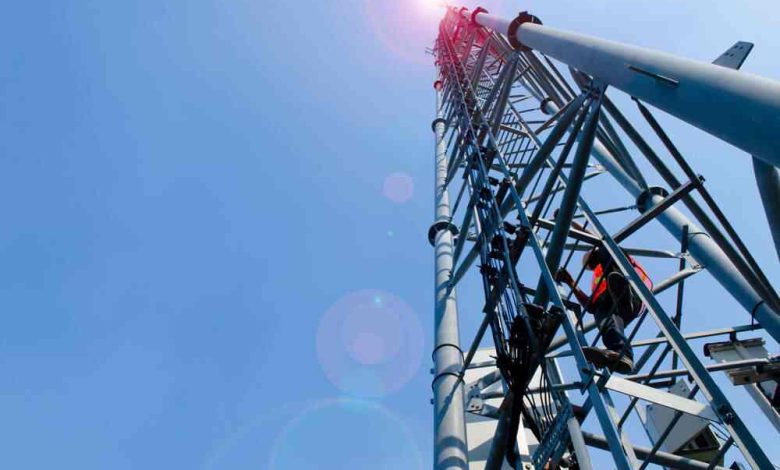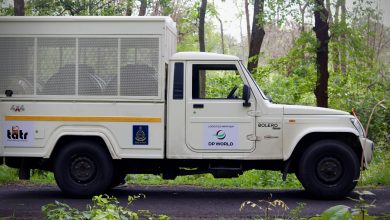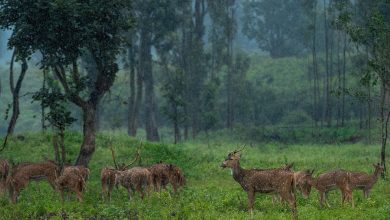National Wildlife Board Says ‘No’ to Mobile Tower in Nagzira

Nagzira Mobile Tower: The National Board for Wildlife (NBWL) recently rejected a controversial proposal to install a mobile tower in the core area of the Nagzira Wildlife Sanctuary. This decision protects one of India’s most critical tiger habitats and highlights a growing concern over how human activity impacts wildlife. Let’s dive into the details of this important decision and its implications.
The Controversial Proposal: A Tower in the Core
The proposal aimed to install a 4G mobile tower in the core zone of Nagzira Wildlife Sanctuary (Nagzira Mobile Tower)—specifically in Thadezari village, which falls within the Navegaon-Nagzira Tiger Reserve (NNTR). The project was part of a larger effort by BSNL to extend mobile network coverage across the country. However, this initiative came under fire due to its location in a core critical tiger habitat.
What Makes the Core Zone Important?
A tiger reserve consists of two key areas: the core (critical tiger habitat) and the buffer zone. The core area is considered the most protected, designed to remain undisturbed to ensure the safety and survival of tigers and other wildlife. Disturbances in these areas could have detrimental effects on the local ecosystem.
Size of the Land in Question
While the proposed project only required a small piece of land—just 0.02 hectares (2,153 square feet)—its placement in such a sensitive area made it highly controversial. Even small disruptions in critical zones can create ripple effects that may lead to habitat destruction, migration issues for wildlife, and increased human-animal conflict.
Initial Approvals and Rejections
The proposal was initially approved by the State’s Chief Wildlife Warden (CWLW) and later by the State Board for Wildlife (SBWL) during a meeting in June 2023. The final say, however, lay with the National Board for Wildlife, which convened in October 2024 to review the project.
Why Was the Proposal Rejected?
At the meeting, the NBWL ultimately rejected the proposal, citing guidelines from the National Tiger Conservation Authority (NTCA). The NTCA advised against the installation of a mobile tower in the core zone, explaining that such projects pose significant risks to wildlife.
Why Mobile Towers Are a Problem for Wildlife
The primary concern surrounding mobile tower installations in wildlife sanctuaries is the disruption they cause to the natural environment. Here are some reasons why installing a tower in Nagzira’s core area would have been detrimental:
1. Disturbance to Natural Habitats
The installation of mobile towers requires significant infrastructure development, including the laying of power cables and the use of generator sets. These activities can disturb wildlife and affect the integrity of the habitat.
2. Increased Human Activity
Building and maintaining a mobile tower would necessitate frequent human visits, introducing noise, pollution, and potential poaching risks into sensitive zones.
3. Radiation Concerns
Mobile towers emit electromagnetic radiation, which can disrupt the flight paths of birds and potentially affect other wildlife in the area. Although the full impact of radiation on animals is still being studied, the precautionary principle is often applied in these cases to avoid unnecessary risks.
4. Policy Against Core Zone Disruption
The Ministry of Environment, Forest, and Climate Change (MoEFCC) has long-standing policies that disapprove of any human encroachment into core tiger habitats. These policies are designed to minimize habitat fragmentation and preserve the natural ecosystems that tigers and other endangered species depend on for survival.
The Role of the Ministry of Environment, Forest, and Climate Change
In its decision, the NBWL followed guidelines issued by the MoEFCC, which clearly state that mobile towers should not be installed within 1 km of existing towers in tiger habitats. The goal is to prevent overlapping disturbances and ensure that wildlife habitats remain as undisturbed as possible.
NNTR Officials Support the Decision
NNTR officials fully supported the NBWL’s rejection of the proposal, emphasizing that this decision is not just about Nagzira but applies to all core tiger habitats in the country. “It’s not only about Nagzira; all the proposals for installing mobile towers in the core areas of tiger reserves will be rejected based on the new policy decisions made by the MoEFCC earlier this year,” said one NNTR official.
A Nationwide Policy Shift
This move is part of a broader effort by the government to protect critical wildlife areas across India. Mobile towers in tiger reserves and other sensitive environments are increasingly being scrutinized to ensure that development does not come at the cost of biodiversity.
Guidelines for Mobile Towers in Tiger Habitats
To minimize the impact of such projects, the MoEFCC has established a set of guidelines for mobile tower installations in tiger reserves. These include:
- No New Towers in Core Zones: The installation of mobile towers in the core critical tiger habitats is prohibited.
- Minimum Distance from Existing Towers: New towers must be located at least 1 km away from existing towers.
- Protection of Bird Flight Paths: Towers should not interfere with bird migration or flight paths.
- Radiation Limits: The radiation emitted by these towers must comply with strict limits to avoid affecting wildlife.
Relocation of Thadezari Village: A Potential Solution
One of the discussions that emerged during the review of this proposal was the potential relocation of Thadezari village, which is currently situated on the fringe of the Nagzira Wildlife Sanctuary. While technically still within the core area, earlier forest regimes excluded the village from park boundaries.
How Relocation Could Help
Relocating the village could allow Nagzira to expand its protected areas, further safeguarding its wildlife. In fact, previous examples of village relocations from tiger reserves have shown positive outcomes for both the community and the local wildlife.
Protecting Wildlife Comes First
The NBWL’s decision to reject the mobile tower installation in Nagzira’s core area underscores the importance of preserving wildlife sanctuaries and respecting the integrity of critical tiger habitats. While the need for improved mobile connectivity is important, it should never come at the cost of our natural ecosystems. By following guidelines and protecting these core areas, we can ensure that future generations will be able to enjoy the richness of India’s biodiversity.
1. Why was the mobile tower proposal rejected? The proposal was rejected because it would have been located in the core area of Nagzira Wildlife Sanctuary, which is a critical tiger habitat.
2. Are mobile towers banned in all tiger reserves? Yes, mobile towers are not allowed in the core areas of tiger reserves as per MoEFCC guidelines.
3. What impact do mobile towers have on wildlife? Mobile towers can disturb habitats, increase human activity, and emit radiation that may affect birds and other animals.
4. Will Thadezari village be relocated? There is ongoing discussion about relocating the village to further protect Nagzira’s wildlife.
5. What are the guidelines for mobile tower installations in wildlife sanctuaries? Guidelines include avoiding core zones, maintaining distance from existing towers, protecting bird flight paths, and controlling radiation levels.









